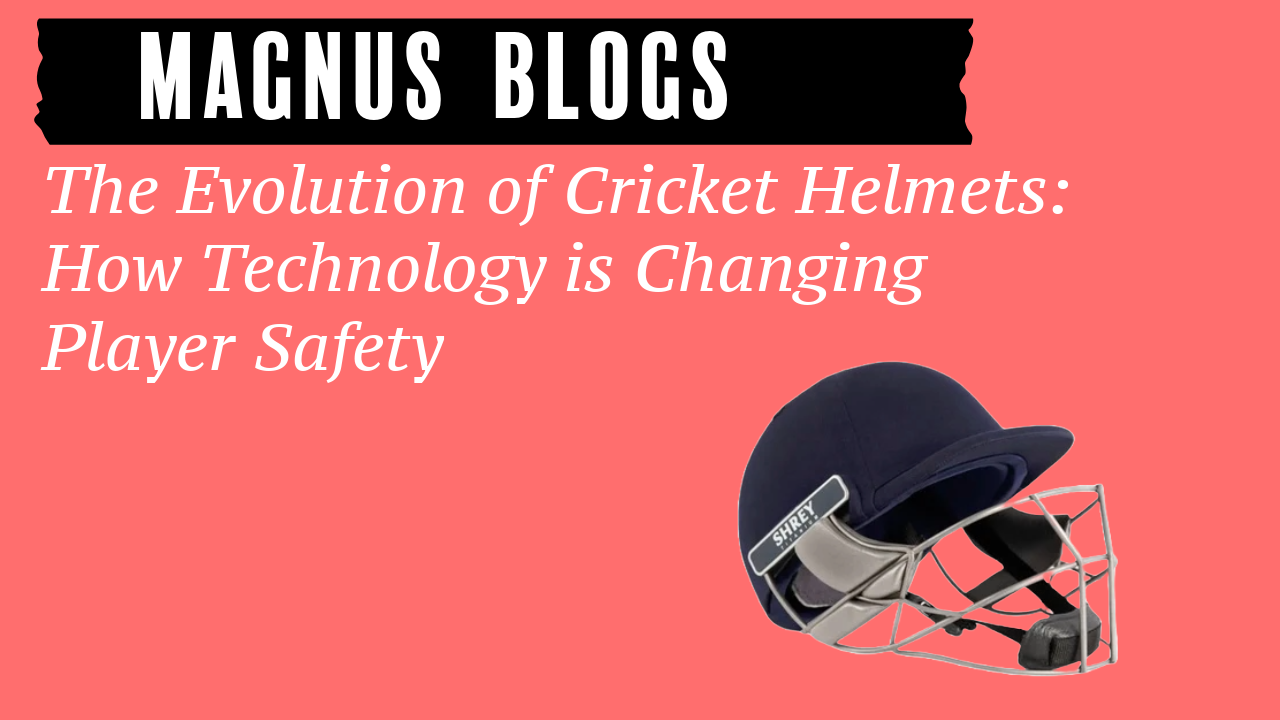Cricket is a sport that has continuously evolved over the years, and one of the most significant advancements has been in player safety—particularly in helmet technology. From the early days of makeshift headgear to today’s high-tech helmets designed with cutting-edge materials, the evolution of cricket helmets has drastically reduced the risk of head injuries and enhanced player confidence. Let’s take a deep dive into how cricket helmets have transformed over time and the role technology plays in modern player safety.
The Early Days: A Game Without Helmets
In the early years of cricket, players relied solely on their skills and reflexes to avoid injuries. Helmets were non-existent, and batsmen faced fast bowlers with little more than a cap for protection. Head injuries were common, but the conservative nature of the game meant that safety gear was slow to be adopted.
The turning point came in the 1970s when the dangers of fast bowling became more evident. Australian cricketer Graham Yallop is credited with being one of the first players to wear a helmet in a Test match in 1978. His initial headgear, however, was rudimentary—a motorcycle helmet adapted for cricket use.
The 1980s & 1990s: The Rise of Protective Helmets
As the game evolved and bowlers increased their pace, helmet manufacturers began developing specialized cricket helmets. The 1980s saw the introduction of helmets with fiberglass shells, foam padding, and metal grills to protect the face. These early helmets were heavier and less ventilated but provided much-needed protection.
By the 1990s, helmets became a common sight on the cricket field. Players like Steve Waugh and Brian Lara were among those who helped normalize helmet use. However, the designs were still relatively basic, with fixed grills and limited adjustability.
The 2000s: Lighter, Stronger, and More Comfortable
With advancements in material science, helmet manufacturers began using carbon fiber, high-density foam, and improved ventilation designs. Helmets became lighter, more durable, and better at absorbing impact. Customization also improved, allowing players to adjust grills and padding for a better fit.
During this era, the tragic death of Phillip Hughes in 2014 brought player safety into even greater focus. Hughes was struck by a short-pitched delivery on the unprotected part of his neck, leading to the development of additional protective gear such as the StemGuard—a detachable neck protector that attaches to the back of helmets.
Modern Cricket Helmets: The Pinnacle of Safety
Today, cricket helmets are at the peak of innovation, offering unparalleled protection. Advanced helmets such as the SG Carbofab and SG Optipro are designed with carbon-fiber reinforcements, impact-resistant shells, and superior ventilation systems. Key innovations in modern helmets include:
Carbon Fiber and Composite Materials – Stronger yet lighter materials enhance durability without compromising comfort. Shock-Absorbing Padding – High-density foam and gel layers improve impact resistance. Adjustable Face Grills – Customizable grills allow players to adjust visibility and protection levels. Neck and Jaw Protection – Additional guards like the StemGuard provide extra coverage against freak injuries. Smart Helmets (Future Tech) – Some companies are developing helmets with sensor technology to measure impact forces and provide real-time injury data.
The Future of Cricket Helmet Technology
With constant technological advancements, cricket helmets will only continue to improve. Here are some potential future developments:
🔹 AI and Smart Sensors – Helmets that detect impact severity and alert medical teams instantly. 🔹 3D-Printed Custom Helmets – Personalized helmets tailored to fit each player’s head shape perfectly. 🔹 Advanced Ventilation Systems – Enhanced cooling technologies to keep players comfortable in extreme conditions. 🔹 Integration with Concussion Protocols – Real-time monitoring to help identify concussions faster and reduce long-term risks.
Conclusion
The journey of cricket helmets from being non-existent to becoming a crucial safety tool is a testament to the sport’s commitment to player well-being. With cutting-edge technology like carbon fiber, smart sensors, and enhanced padding, modern cricket helmets provide unmatched protection while ensuring players perform at their best.
As innovations continue, one thing is certain: cricket helmets will keep evolving to make the game safer and more exciting for players and fans alike! 🏏🛡️
What are your thoughts on the future of cricket helmet technology? Let us know in the comments!
Cricket bat types, Cricket equipment in usa, Cricket equipment store, Cricket gloves, Cricket helmet, Cricket kit bags, Cricket retailers, Durable cricket gloves, English willow bats, Icc approved helmets., Kashmir willow cricket bat, Latest kashmir willow bats,
